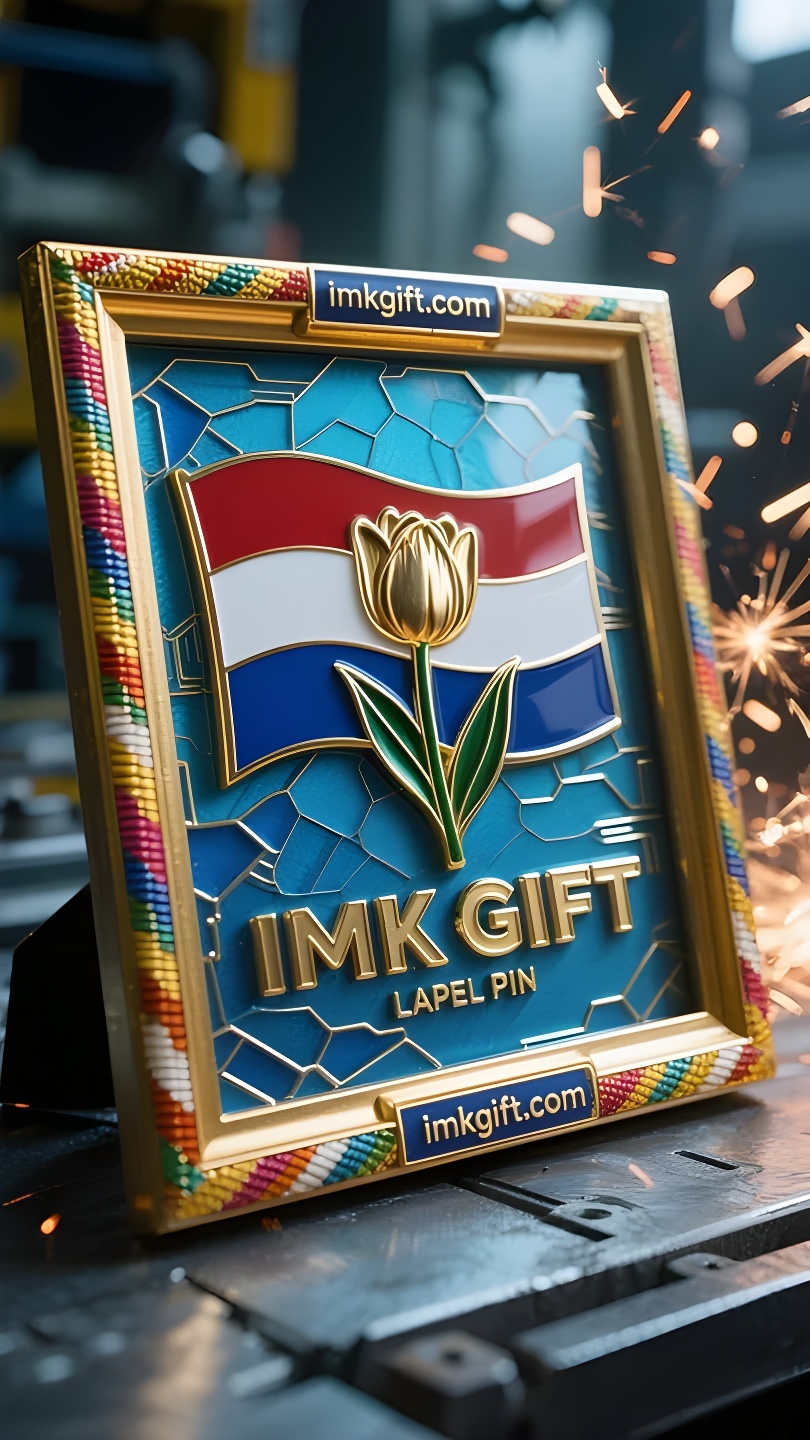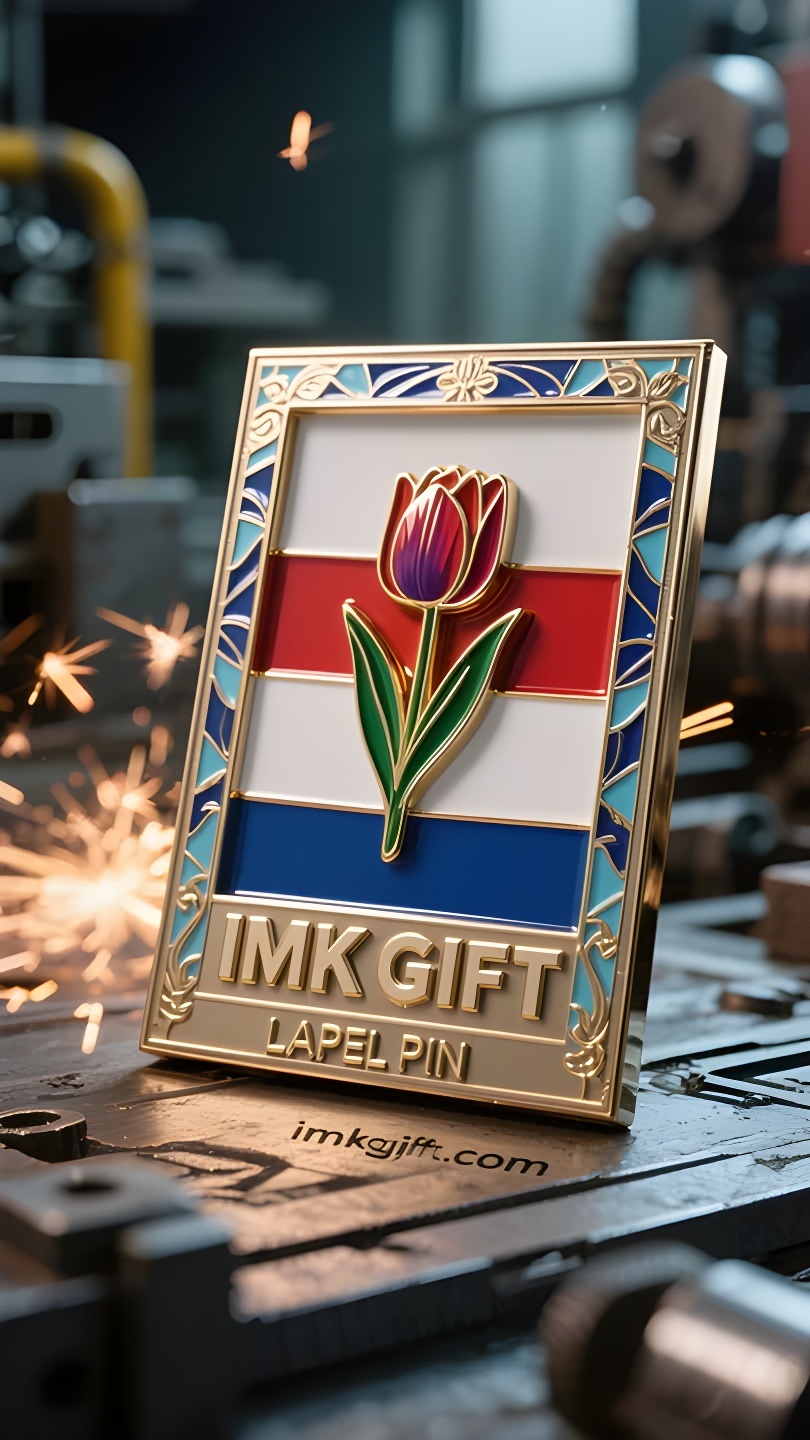in986-Tussen-Rood-Wit-en-Blauw-Bloeiende-Rand
▼
In april verweven in Nederland de rode, witte en blauwe kleuren van de nationale vlag en de tulpenvelden zich tot een vloeiende beeldrol. Wanneer mensen stoppen op de herdenkingsmarkt langs het kanaal, worden ze altijd aangetrokken door een bijzonder handwerk: een fotolijst van houten tulpenblaadjes. Deze ogenschijnlijk eenvoudige versiering bevat in werkelijkheid de code van de Nederlandse nationale geest. De omtrek van de fotolijst is samengesteld uit driekleurige houten stroken. Het rood symboliseert de moed die van generatie op generatie is doorgegeven, het wit staat voor het geloof zo helder als water, en het blauw draagt de visie van pionieren als de lucht. En elk van de tulpenblaadjes die in de lijst bloeien, is nauwkeurig gesneden, net als de Nederlandse vindingrijkheid om de laaglanden te bewerken tot vruchtbare grond. De fotolijst markeert fysiek de grenzen, maar het transparante ontwerp laat licht en schaduw binnen en buiten vrij stromen, net als dit laaggelegen land: dammen gebruiken om de oceaan te weerstaan, maar de wereld omarmen met havens; windmolens gebruiken om de harde wind te temmen, maar de zeilen naar de verte laten zeilen. Op dat moment zien mensen die de fotolijst omhoog houden niet alleen het stilstaande beeld van bloemen, maar ook de mogelijkheid om erdoorheen te breken. Wanneer tulpen hun uitgerekte houding in een beperkte ruimte behouden, en wanneer de driekleurige rand eerder een contrast dan een beperking wordt, herinnert het ons eraan dat ware vrijheid erin bestaat te kiezen voor bloei na het erkennen van de beperkingen. Zoals Nederlandse waterbouwkundigen vaak zeggen: “We vechten niet tegen water, maar leren samenleven met water.” Misschien wel de mooiste levensvorm is om zijn eigen groeirichting te vinden in de ordening van rood, wit en blauw.
In April, the Netherlands’ national flag, red, white and blue, interweaves with the tulip fields to form a flowing picture scroll. When people stop at the memorial market beside the canal, they will always be attracted by a special handicraft – a photo frame made of wooden tulip petals. This seemingly simple decoration actually contains the code of the Dutch national spirit. The outline of the photo frame is composed of three-color wooden strips. The red symbolizes the courage passed down from generation to generation, the white represents the belief as clear as water, and the blue carries the vision of pioneering like the sky. And each of the tulip petals blooming in the frame has been precisely cut, just like the Dutch ingenuity of cultivating the depression into fertile soil. The photo frame physically demarcates the boundaries, but the transparent design allows the light and shadow inside and outside to flow freely, just like this low-lying country: using dams to resist the ocean, but embracing the world with ports; using windmills to tame the strong wind, but letting the sails sail to the distance. At this moment, people holding up the photo frame see not only the freeze frame of flowers, but also the possibility of breaking through the frame. When tulips still maintain their stretched posture in a limited space, and when the three-color border becomes a foil rather than a constraint, it reminds us that true freedom is to choose to bloom after recognizing the limitations. As Dutch hydraulic engineers often say: “We are not fighting against water, but learning to coexist with water.” Perhaps the most beautiful form of life is to find its own growth direction in the order constructed by red, white and blue.
四月的荷兰,国旗红白蓝三色与郁金香花田交织成流动的画卷。当人们驻足于运河旁的纪念市集,总会被一件特别的工艺品吸引——用木制郁金香花瓣拼成的相框。这看似简单的装饰,实则暗含荷兰民族精神的密码。
相框的轮廓由三色木条构成,红象征代代传承的勇气,白代表澄澈如水的信念,蓝则如苍穹般承载着开拓的愿景。而框内盛放的郁金香花瓣,每一片都经过精确裁切,恰似荷兰人将洼地耕耘成沃土的匠心。相框在物理上划定边界,却因通透的设计让内外光影自由流转,正如这个低地之国:用堤坝抵御海洋,却以港口拥抱世界;用风车驯服狂风,却让风帆驶向远方。
此刻捧起相框的人们,看见的不仅是鲜花的定格,更是突破框架的可能性。当郁金香在限定空间中依然保持舒展的姿态,当三色边界成为衬托而非束缚,这提醒着我们:真正的自由,是在认清局限后依然选择盛放。就像荷兰水利工程师常说的:“我们不是在对抗水,而是在学习与水共生。”或许生命最美的形态,正是在红白蓝构筑的秩序里,找到属于自己的生长向度。
▼
Contact Us
📞 Tel: +0086-760-85286839
📧 Email: sales3@imkgift.com








